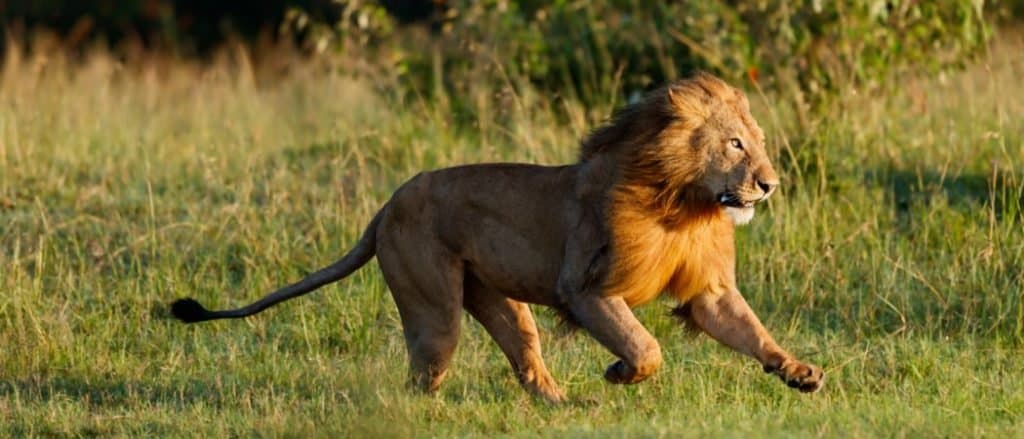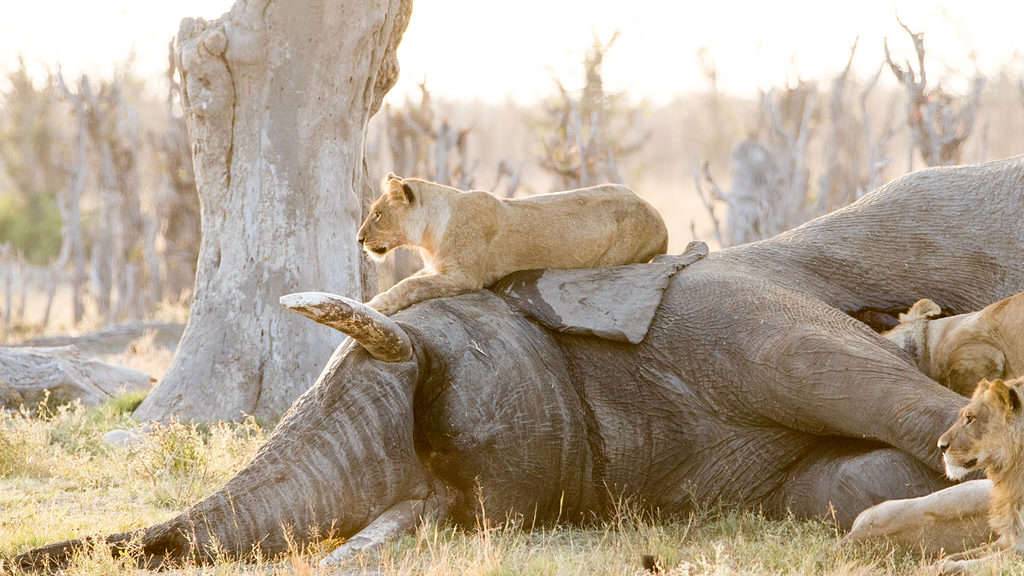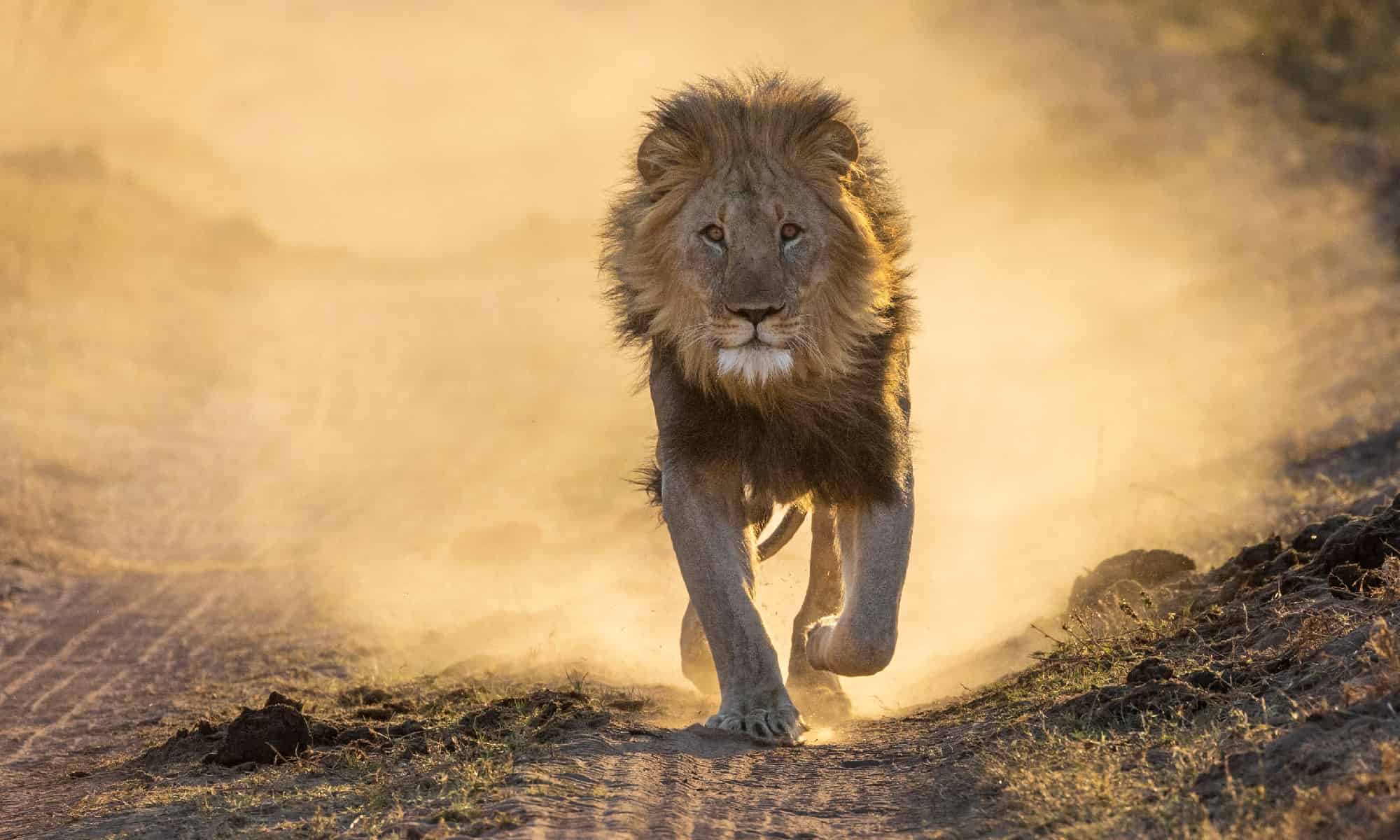Although the current lion population has been reduced to small pockets of sub-Saharan Africa, these majestic felines once roamed multiple continents. For many years, these big cats graced landmasses from Europe to the southern tip of Africa, throughout West Africa, and down into India. Nowadays, the bulk of exposure to lions that people get is at their local zoo. The cats are often seen lazing around and relaxing as they spend up to 21 hours each day conserving energy. Since they’re frequently caught snoozing or just chilling out, it’s no wonder why many folks might wish to discover how fast lions can run.
How Fast Can Lions Run?
An adult lion runs up to an average speed of 50 mph! While that’s a scary thought for any human who might encounter one in the wild, it’s essential to know that this is their top speed, and lions only ever run that fast in short bursts. Of course, that doesn’t mean that you want to get into a chase with an adult lion. It’s best always to keep plenty of distance, particularly once you know they can leap up to 36 feet! At their top speed of 50 mph, lions run approximately 328 feet in four seconds.

An adult lion can reach a top speed of 50 miles per hour.
©Maggy Meyer/Shutterstock.com
Can a Human Outrun a Lion?
Absolutely not. As a reference point, the fastest human ever recorded is Usain Bolt, who maxes out his pace at 27.79 mph. This is barely over half as fast as a lion can run. Only try to outpace a lion if you wish to go from being a predatory mammal to immediately becoming prey. Additionally, it behooves readers to know that while most lions tend to flee from humans because they view us as a threat, they could also be prone to attacking people in response to this perceived threat. Keeping plenty of distance between yourself and a lion is always best.
Can a Lion Outrun a Car?
Take, for example, the thousands of years of breeding horses for speed and stamina that have many of them able to outrun wolves (37 mph) and bears (approximately 30 mph). Still, a horse is no match for the speed at which lions max out — 50 mph. So, if a vehicle travels 50 mph or less, the answer is obviously yes, at least for a short distance. However, the answer is a resounding no since most vehicles can travel up to or over 100 mph. At their top speeds, lions cannot run faster than cars can drive.
Are Lions the Fastest Animal on Land?
While lions are not the fastest animals on Earth (the peregrine falcon hits speeds of a whopping 240 mph), they are one of the fastest land animals. Still, they are not the fastest. Faster animals than lions include cheetahs (50-80 mph), pronghorns (61 mph), and springboks (55 mph). Although wildebeests can reach speeds equal to that of lions, lions are generally included in the world’s top ten fastest land animals.
How High Can a Lion Jump?
As mentioned earlier, an adult lion can leap up to 36 feet. Keep in mind, though, that a vertical jump is much different than a leap, which means horizontal distance. At the peak of a vertical jump, an adult lion typically reaches an average height of 12 feet. Depending on their size and strength, some lions hit a vertical jump as high as 18 feet and a horizontal leap as far as 40 feet. For reference, 12-18 feet is higher than a two-story building, and 36-40 feet is about as long as a humpback whale.
What Is the Lion Afraid Of?
Standing proudly at the top of the food chain, lions are not afraid of much. They have few predators in their natural habitat. They are not hunted by fellow predators other than human beings who encroach on their land and sometimes stalk and kill them — generally for sport. Besides humans, lions, which other animals do not hunt, are sometimes afraid of elephants, cape buffalo, hyenas, rhinos, and hippos. However, it should be noted that lions are not so much afraid of these animals as they are enemies with them. There have been instances where snakes, buffalo, kudu, giraffes, and porcupines have killed lions. Still, by and large, most other predatory animals share a healthy respect for the lion and keep their distance.

While lions are not scared of many creatures, they do have a lot of enemies.
©John WP White/Shutterstock.com
Other Amazing Lion Facts
They Are Huge!
Second in size to only the Siberian tiger, lions are one of the most giant felines on the planet. With a weight range of 160-240 pounds, lions are Earth’s second heaviest feline predators. Behind the lion and the Siberian tiger, rounding out the top ten largest felines are the jaguar, cougar, leopard, cheetah, snow leopard, Eurasian lynx, Sunda clouded leopard, and clouded leopard.
Lions Are Loud!
Lions have the unique ability to announce their presence from miles away! The roar of an adult lion can be heard as far as five miles away. As if a lion roaring wasn’t enough to terrify you up close, imagine hearing their guttural sound echo from a town over!
Social Cats
Not every lion fact is laced with terror. With all the fear these powerful creatures rightfully instill, it’s important to note that they are the most social big cats. African lions, in particular, live together in groups called “prides.” These groups consist of females (lionesses), males, sub-adults, and cubs. Cubs are the children, and like all children, cubs love to play games, including wrestling and seemingly tug-of-war games. While the cubs play, lionesses are known to be caring mothers. They are known to take in neglected cubs, allowing them to suckle and effectively giving them a chance to survive.
They Need Help and Protection
Asiatic lions are, tragically, a fleeting species. The remaining Asiatic lions are in Sasan-Gir National Park in India, created to protect the species. Lions are consistently threatened by human-to-animal conflict, prey depletion, and habitat loss. Currently, the lion is listed as vulnerable on the IUCN (International Union for Conservation of Nature) Red List of Threatened Species.
Thank you for reading! Have some feedback for us? Contact the AZ Animals editorial team.








